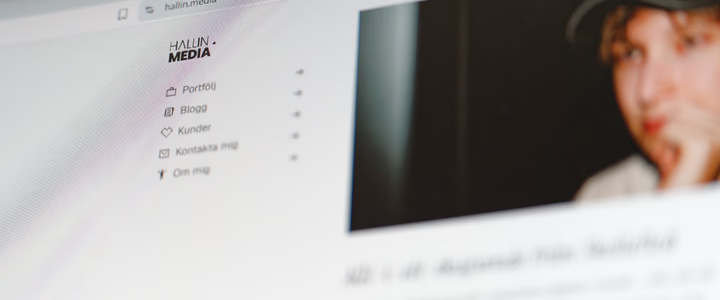
Why rebuild your portfolio — again?
A portfolio feels like a never-ending process, but that's probably part of growing both creatively and professionally.
I think most people in the creative industry have experienced their own portfolios and websites as more of an ongoing struggle than a product that ever feels “finished.”
But why is that?
I’ve been stuck in this portfolio cycle myself several times. I get inspired to refresh my web presence, design what I feel is the perfect website for myself, and then, suddenly, it’s no longer good enough after just a few weeks. I start over from scratch, and the cycle continues. The question of what actually triggers this cycle often remains unanswered.
I believe a major issue, especially for a solo freelancer, is working alone. You don’t really have anyone to bounce ideas off of, get feedback from, or just discuss your thoughts with. If you had a colleague to validate your work, it might be easier to feel satisfied with what you’ve created and, therefore, not feel the constant need to rebuild.
Looking back at the times I’ve rebuilt my portfolio, the reason has almost always been one of two things:
- I was inspired by someone else’s website and wanted to do something similar, or
- I felt my current website didn’t represent me or my work in the right way.
The latest rebuild was mainly due to the second reason. I didn’t feel my previous site captured my style and personality in a way that was truly “me.” I wanted something that felt more personal and that I could stand behind. It’s a difficult balance to find that “just right” feeling.
Am I happy with my portfolio as it is now? Absolutely. But if you ask me in six months, I might not be. And that’s okay. I’ll either have to rebuild it again or just learn to accept what I already have.
Your digital home
I once read an analogy where someone described their website as their own home, but on the web. That idea has stuck with me through many redesigns.
Think about it: how do you decorate your home when you first move in? You probably decorate it once, maybe move a sofa or a dresser, but for the most part, everything stays in its place, right? You don’t tear down the whole house and build a new one every time you feel like it.
I’ve started to see my web presence in the same way, and it’s a principle I try to apply across all platforms — not just my portfolio. Am I trying to represent myself or someone else? Would I want to live in my own home if it looked like my online presence? If I’m not happy with my decor, why would I keep it?
The logic is that if you’re not happy from the start, you should’ve fixed it from day one. But you can also learn from your mistakes and improve what you already have. Then you can see the positive side of it: you’ve grown and probably learned something new along the way.
Viewing your website, your portfolio, and your social media as your home is probably a healthier approach to ever feeling “finished.” If you’re not comfortable, figure out why and see what you can do to feel comfortable instead. That principle can be applied to much more than just your online presence.
It’s okay to change
It’s important to remember that your portfolio is a reflection of you, and as people, we are constantly changing and evolving. It’s not just about showcasing your work and professional achievements, but also who you are as a person and an individual.
It’s completely natural to want to update and improve what we show the world, especially as we grow in our careers. That’s why it’s important to remember that you also need to show who you are as a person, not just what you can do. It’s about creating a balance between showcasing your skills and being authentic in your presentation.
How do you break the cycle?
If you recognize yourself in the perpetual portfolio cycle, here are a few thoughts that have at least helped me:
- Set clear goals: What do you want to achieve with your portfolio? Is it to get a job, showcase a specific skill, or build your personal brand? A clear goal makes decisions easier.
- “Good enough” is often the best: Don’t strive for perfection. Set a deadline and stick to it. A published portfolio that’s 80% done is infinitely better than one that’s 100% perfect but never sees the light of day.
- Plan for the future: Build your site modularly. Instead of thinking you have to rebuild everything from scratch, create a system where you can easily add new projects or swap out sections as needed.
In the end, the constant evolution of your portfolio is a sign that you’re growing. Each new version is a testament to new knowledge, new insights, and a more refined picture of who you are as a creative professional. So the next time you feel the urge to start over, don’t see it as a failure — see it as an opportunity to show how far you’ve come.
Join Hallin's Takes
Did you know I have a newsletter? Me neither, but I do. Sign up and get exclusive insights, tips, and behind-the-scenes delivered straight to your inbox. No spam, just the good stuff — about 4 times a year, at most.